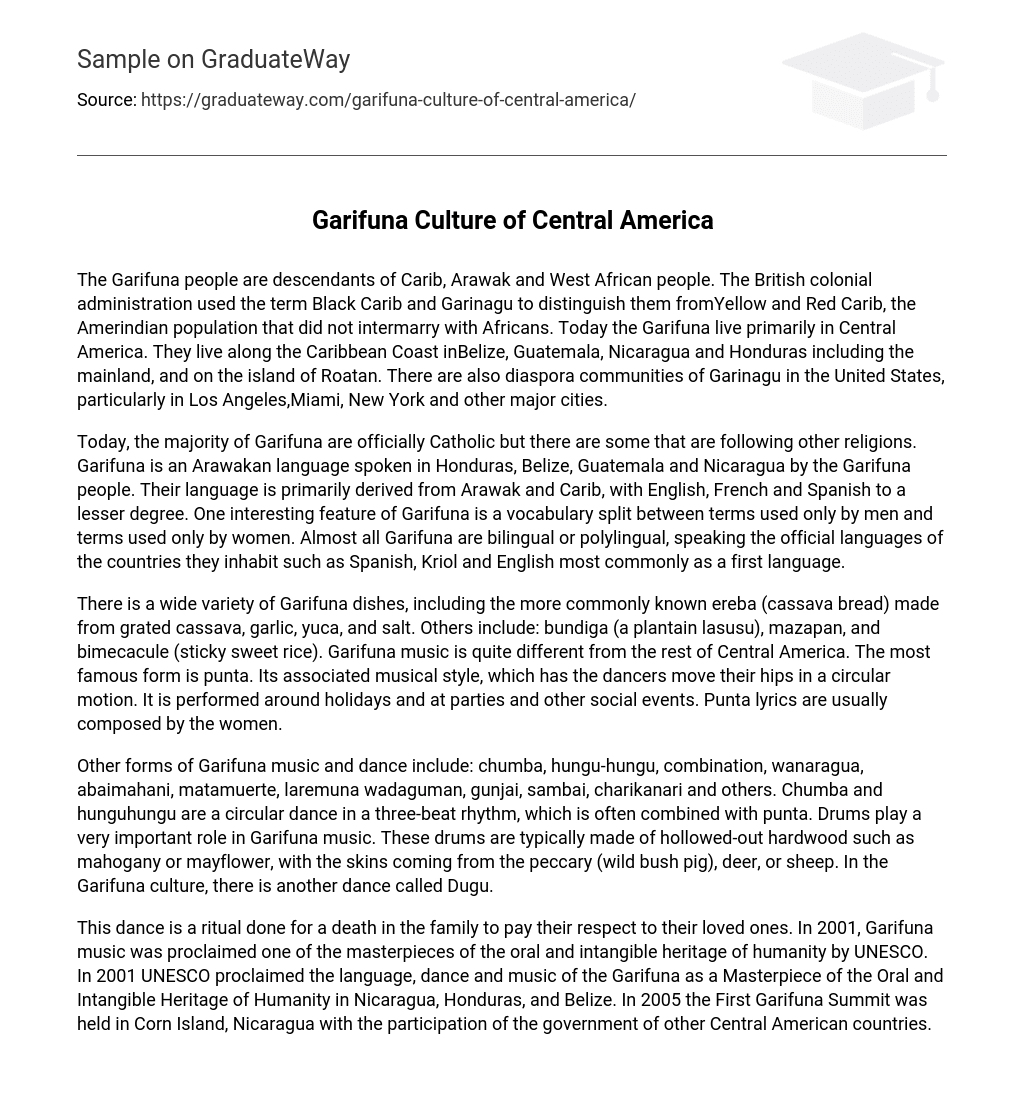The Garifuna people are descendants of Carib, Arawak, and West African individuals. They were referred to as Black Carib and Garinagu by the British colonial administration to distinguish them from the Amerindian population called Yellow and Red Carib who did not have intermarriage with Africans. Currently, the Garifuna mainly reside in Central American countries including Belize, Guatemala, Nicaragua, and Honduras. This includes both the mainland and Roatan Island on the Caribbean Coast. Moreover, there are also diaspora communities of Garinagu living in major cities in the United States such as Los Angeles, Miami, New York, among others.
The majority of Garifuna today are officially Catholic, although there are some who follow different religions. The Garifuna people speak an Arawakan language called Garifuna, which is spoken in Honduras, Belize, Guatemala, and Nicaragua. Their language is mainly derived from Arawak and Carib, with lesser influences from English, French, and Spanish. One interesting aspect of Garifuna is its vocabulary, which is divided between terms used exclusively by men and terms used exclusively by women. Almost all Garifuna people are bilingual or polylingual, as they speak the official languages of the countries they live in, such as Spanish, Kriol, and English, often as their first language.
There is a wide variety of Garifuna dishes, including the more commonly known ereba (cassava bread) made from grated cassava, garlic, yuca, and salt. Others include bundiga (a plantain lasusu), mazapan, and bimecacule (sticky sweet rice). Garifuna music is quite different from the rest of Central America. The most famous form is punta, with its associated musical style involving dancers moving their hips in a circular motion. Punta is performed around holidays, parties, and other social events. The lyrics of punta songs are typically composed by women.
Among the different forms of Garifuna music and dance are chumba, hungu-hungu, combination, wanaragua, abaimahani, matamuerte, laremuna wadaguman, gunjai, sambai, charikanari, and others. Chumba and hunguhungu are circular dances performed to a three-beat rhythm, often combined with punta. Drums play a crucial role in Garifuna music, typically crafted from hollowed-out hardwood like mahogany or mayflower, with skins sourced from the peccary (wild bush pig), deer, or sheep. Additionally, in the Garifuna culture, there exists a dance called Dugu.
This dance is a ritual performed to honor and remember deceased family members. In 2001, UNESCO declared Garifuna music as a masterpiece of oral and intangible heritage. The same year, UNESCO also recognized the language, dance, and music of the Garifuna people as a Masterpiece of Oral and Intangible Heritage in Nicaragua, Honduras, and Belize. In 2005, the First Garifuna Summit took place in Corn Island, Nicaragua, with the involvement of the governments of other Central American nations.





